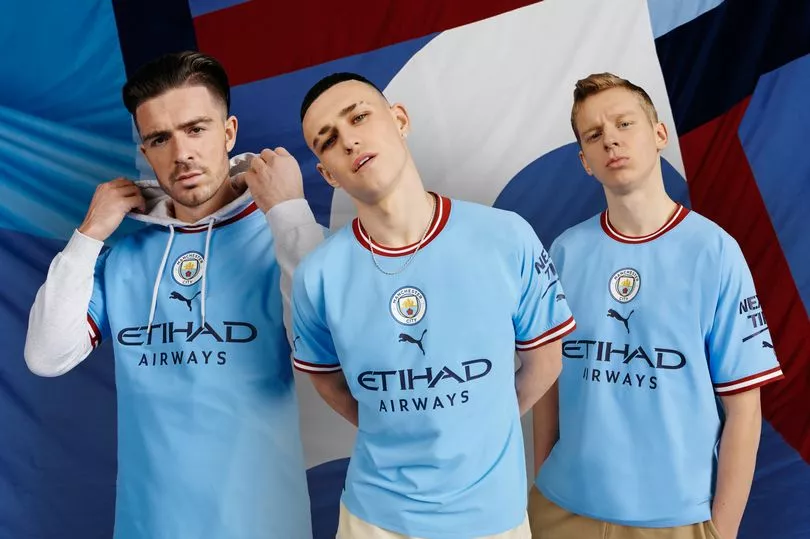The Manchester City football shirts are more than just pieces of clothing worn by players during matches; they embody the club’s rich history, culture, and identity. From humble beginnings to becoming a global powerhouse in football, the evolution of Manchester City’s shirts tells a compelling story of success, resilience, and transformation. In this article, we’ll explore the history, significance, and cultural impact of Manchester City football shirts.
The Early Days: Establishing a Unique Identity
Founded in 1880 as St. Mark’s (West Gorton), the club underwent several name changes before officially becoming Manchester City in 1894. Initially, the team sported various colors, but the iconic sky blue quickly emerged as the defining color of the club. This choice not only set Manchester City apart from its rivals but also created a unique identity that fans would rally around for generations.
The early shirts were simple, typically featuring a plain sky blue design paired with white shorts. The absence of sponsors and logos allowed the focus to remain on the players and the game itself. As the club grew in stature and success, the sky blue shirt became a powerful symbol of pride for both players and supporters.
The Rise to Prominence: Success in the 1960s and 1970s
The 1960s and 70s were transformative years for Manchester City. Under the guidance of managers like Joe Mercer and Malcolm Allison, the team secured several significant trophies, including the First Division title in 1968, the FA Cup in 1969, and the European Cup Winners’ Cup in 1970. During this golden era, the football shirts became synonymous with the club’s success.
One of the most memorable kits from this period is the 1970 European Cup Winners’ Cup final shirt, worn during the victory against Górnik Zabrze. This classic sky blue shirt, featuring the club crest, holds a special place in the hearts of fans, representing a time when City was at the pinnacle of English football.
The Commercialization Era: Sponsorships and Innovations
As football became more commercialized in the 1980s, Manchester City’s shirts began to reflect these changes. The introduction of sponsorships marked a new era in the design of football shirts. Saab became the first sponsor to appear on the team’s shirts in 1982, paving the way for increased branding in football.
Throughout the 1990s, the club experienced ups and downs, and the shirt designs varied significantly. The partnership with Brother, which started in 1989, brought bold new designs to the kits. One standout was the 1998-99 home shirt, featuring a diagonal stripe that was worn during a dramatic playoff final victory over Gillingham, securing promotion back to the Premier League.
The Sheikh Mansour Era: A New Dawn of Success
The acquisition of Manchester City by Sheikh Mansour in 2008 marked a turning point in the club’s history. With significant financial backing, City transformed into one of the most formidable teams in England and Europe, and the football shirts worn during this era became symbols of ambition and success.
One of the most iconic shirts from this period was the 2011-12 home kit, worn when Manchester City clinched their first Premier League title in 44 years. This shirt, featuring the Etihad Airways logo, became legendary after Sergio Agüero scored the dramatic last-minute goal against Queens Park Rangers, securing the title. The sky blue shirt now represents a moment of joy and resilience for City fans.
The Puma Partnership: Modern Design and Innovation
In 2019, Manchester City signed a kit deal with Puma, ushering in a new chapter in the club’s shirt designs. The first home kit launched under Puma maintained the classic sky blue color while introducing modern design elements that pay homage to the club’s rich heritage.
The 2019-20 home shirt featured a mosaic pattern that celebrated the artistic and industrial heritage of Manchester. This design resonated with fans, reinforcing the connection between the club and its city. Puma’s commitment to sustainability is also evident, with many modern kits being made from recycled materials, aligning with a growing emphasis on eco-friendly practices in sportswear.
The 2020-21 home kit, with its sleek geometric patterns, was worn during a season where City showcased their strength in both the Premier League and other competitions. The kit was modern yet respectful of the club’s storied history, making it a favorite among fans.
Cultural Significance: More Than Just a Shirt
For Manchester City supporters, the football shirt is a powerful symbol of pride and identity. Wearing the sky blue shirt signifies a deep connection to the club’s history and values. Whether at the Etihad Stadium on match days or watching from home, fans proudly display their allegiance by donning the club’s colors.
The sight of thousands of fans clad in sky blue, especially during crucial matches, creates an electric atmosphere that enhances the experience of supporting the team. Manchester City football shirts have transcended the sport, becoming fashion statements embraced by individuals who appreciate their history and style. Retro designs from the 60s, 70s, and 90s are especially sought after by collectors, while modern kits continue to attract new fans.
Conclusion: A Legacy in Sky Blue
The Manchester City football shirts have evolved significantly over the years, but their core identity—represented by the iconic sky blue—has remained constant. These shirts tell the story of a club that has risen from local roots to global prominence, reflecting its history, values, and ambitions.
As Manchester City continues to achieve new heights, the football shirts will remain a cherished part of the club’s legacy, symbolizing both past triumphs and future successes. Whether worn by players during historic matches or by fans around the world, the sky blue shirt stands as a testament to the pride and passion of Manchester City Football Club.


